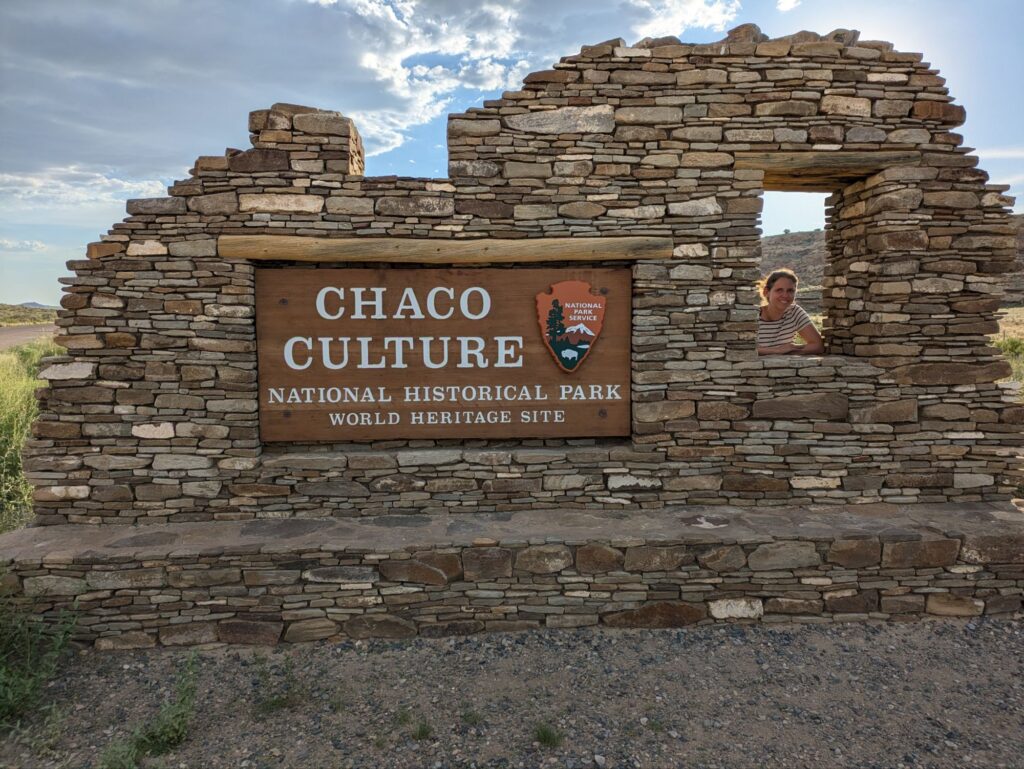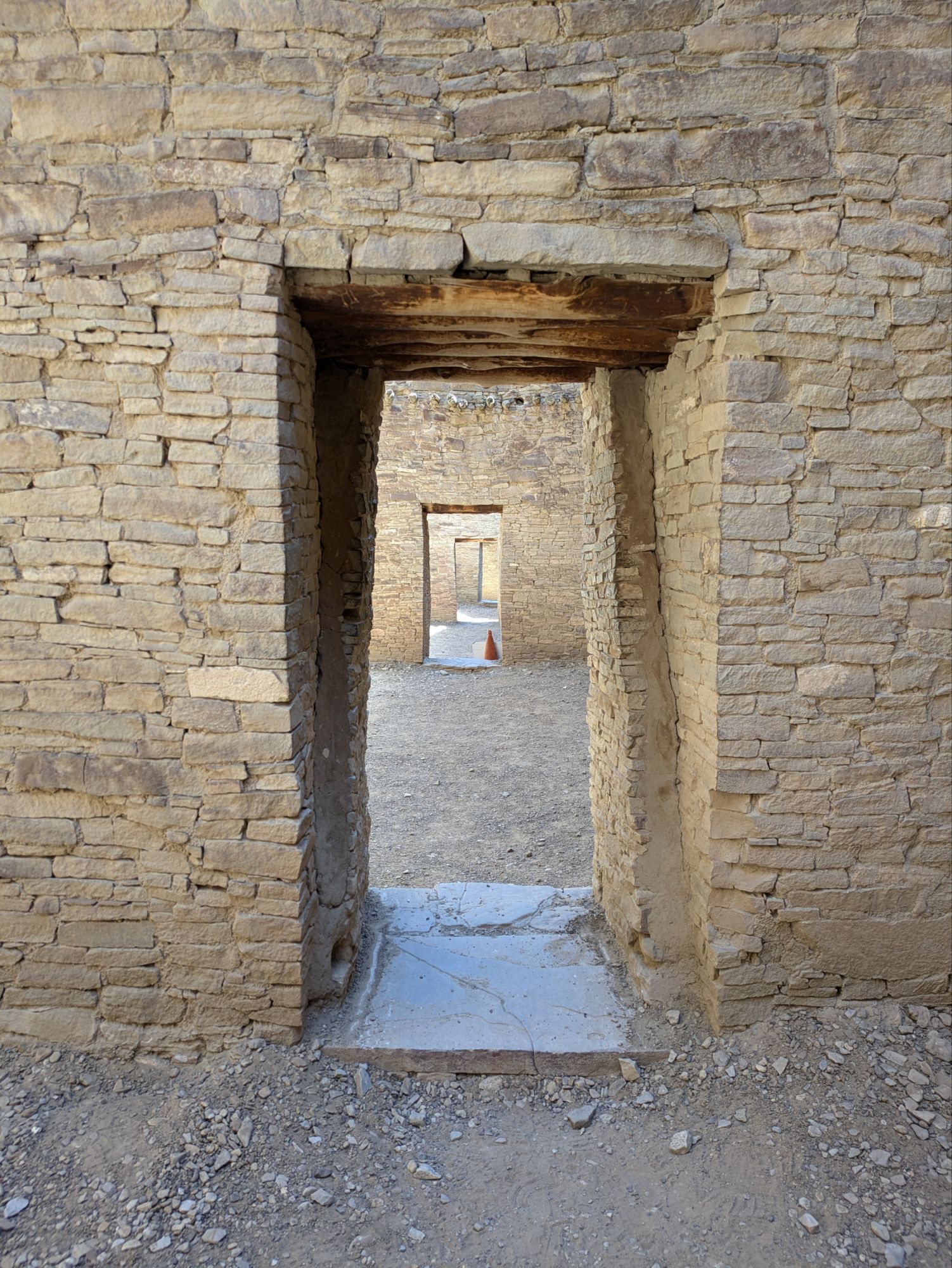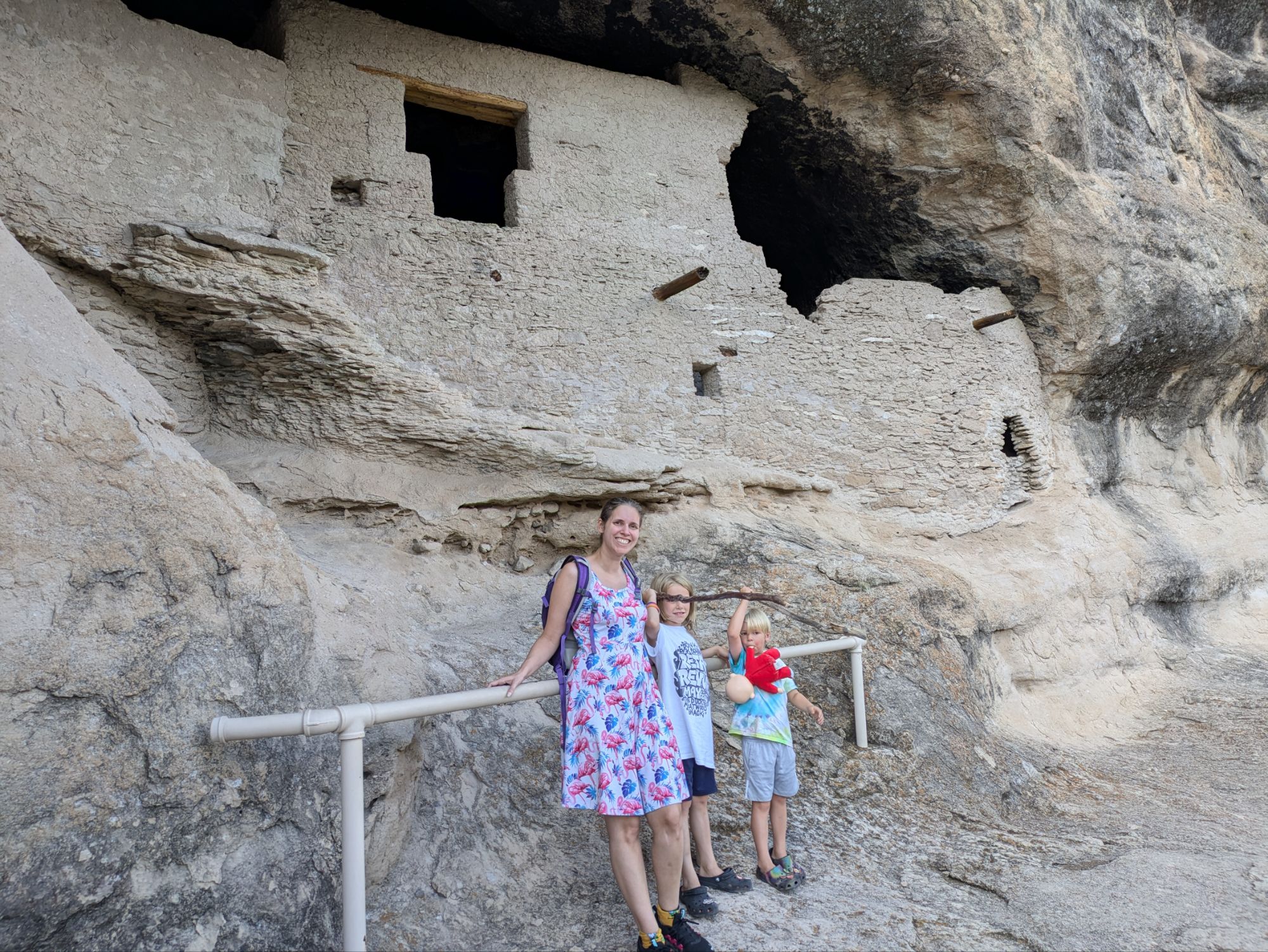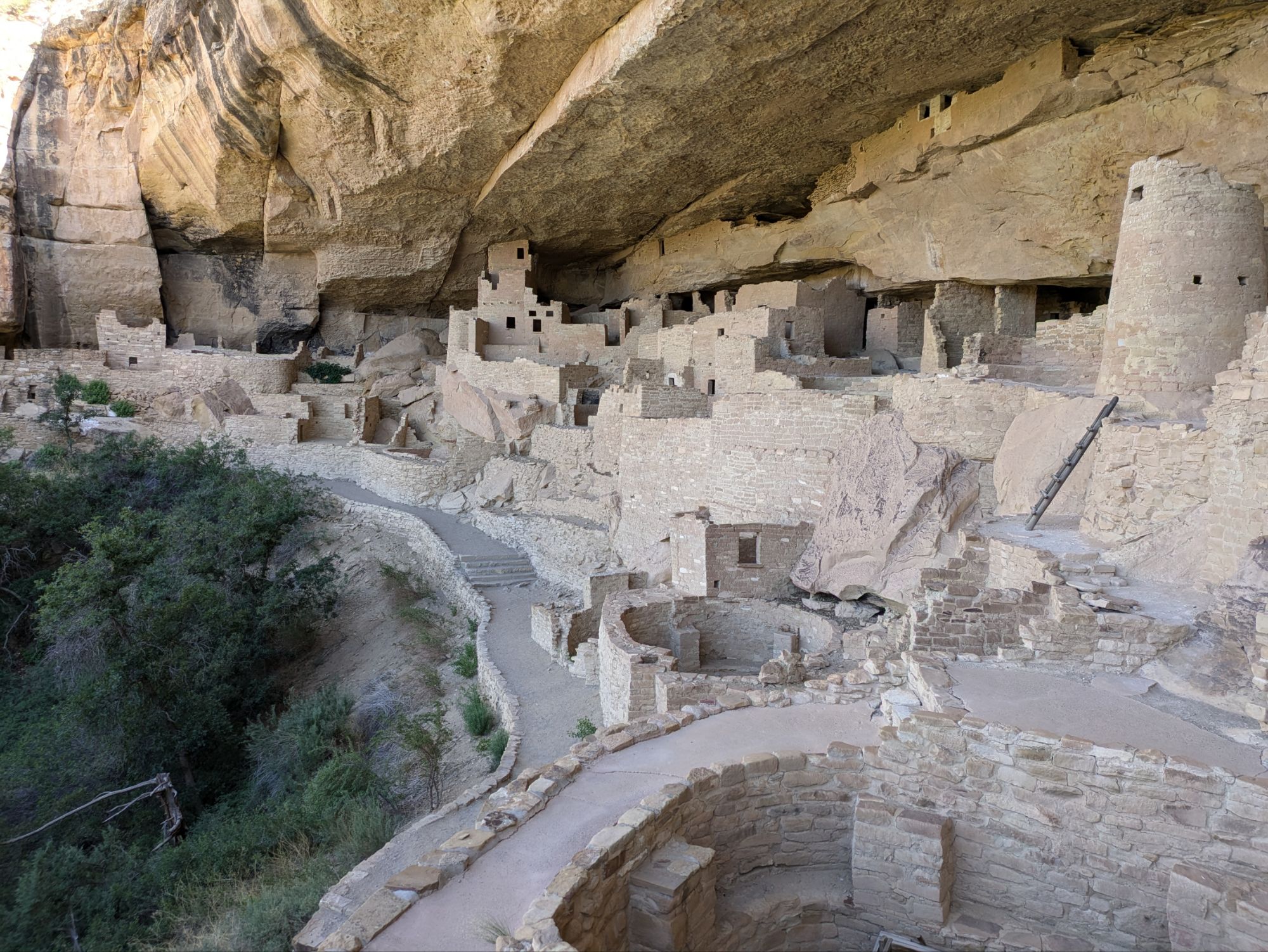Exploring Ancient Wonders: A Journey Through Aztec Ruins and Chaco Canyon
Driving West from Mesa Verde, we stop at Aztec Ruins in Aztec, NM and then head to Chaco Canyon: the birthplace of Ancestral Pueblan culture.
Discovering Aztec Ruins National Monument
Our journey to Chaco Canyon began with a fascinating detour to the Aztec Ruins National Monument. Nestled in the heart of New Mexico, this site boasts the impressive Aztec West, a great house consisting of 400 rooms and kivas. Despite its name, these ruins have no connection to the Aztecs of Mexico; early Spanish settlers misnamed them. The site is a satellite location to Chaco Canyon the focus of this article.

The site is well-documented and excavated, offering visitors a chance to walk through history. Imagine strolling through the remnants of a civilization that thrived centuries ago, guided by detailed information at every turn.
The Great North Road: A Marvel of Ancient Engineering
Connecting Aztec Ruins to Chaco Canyon is the Great North Road, a remarkable feat of ancient engineering. This 35-mile, 30-foot wide road runs straight through the valley, the largest single construction by the ancient southwest pueblos. It’s awe-inspiring to think about the effort and precision required to build such a road in ancient times.

Chaco Culture National Historical Park
The Road to Chaco: An Adventure on Wheels
The drive from Aztec Ruins to Chaco Canyon is mostly smooth sailing until you hit a remote, dusty, and bumpy dirt road cutting through Navajo land. This 20+ mile stretch is a true test for any vehicle and driver. Our camper and car, along with the driver’s skills, were put to the ultimate test, adding a dash of adventure to our journey.

Camping at Gallo Campground
Arriving at Gallo Campground, we set up for a night of dry camping. The site was large and welcoming, with a stunning backdrop featuring a pueblo built right into the wall. It’s summer and the weather was perfect for a night under the stars, surrounded by the echoes of ancient cultures.

Chacoan Culture: A Mysterious Civilization
Chacoan culture thrived between 850 and 1250 AD, before mysteriously disappearing. Located in the center of the San Juan Basin, Chaco is believed to have been the hub of this vibrant culture, with over 400 great houses in the area. The central building, Pueblo Bonito, stands as the largest and most impressive structure in Chaco Canyon.
Pueblo Bonito: Heart of the Chacoan World
Pueblo Bonito was the center of a ceremonial, political, and trade network. We attended an afternoon ranger talk here, learning about the highly organized society led by priest figures. These structures were built to impress visitors and host ceremonies honoring celestial events. The architectural marvels were likely maintained by the people living there, dedicated to their cultural and spiritual practices.

Great House
The Mysteries of Great House Architecture
One of the great mysteries of Chacoan architecture is the Inverted T Door. According to our ranger guide, it might represent a cloud plume, based on research by Marion Love in 1974. These doors and other architectural elements connect to the spiritual and celestial beliefs of the Chacoan people.

Exploring the Kivas
Kivas at Chaco Canyon are similar to those at Mesa Verde but significantly larger. Casa Rinconada, the largest kiva of the Puebloan culture, sits atop a hillside, oriented to the cardinal directions. Inside, one can witness the summer solstice and lunar events, showcasing the Chacoans’ advanced understanding of astronomy.

Celestial Origins and Connections
Two years ago, we visited Chimney Rock and learned about its connection to Chacoan civilization. Like Chimney Rock, Chacoan architecture is deeply tied to the cosmos. The north wall of Aztec West aligns with the sun’s path on the summer solstice, reflecting the Chacoans’ celestial knowledge.

Petroglyphs at Piedro del Sol
During our visit, we attended a ranger talk at Piedro del Sol. The petroglyphs here are connected to astronomical events, including an image of a solar eclipse from 1097 AD. The Kokopelli figure, or Alasaka to the Hopi, symbolizes germination and emergence from the underworld. At the summer solstice, the sun rises perfectly over the peak, a breathtaking sight.

The Enigmatic Sun Dagger
Atop Fajada Butte lies the Sun Dagger, an astronomical tool constructed by the Puebloans. This fascinating device tracks the solar equinox and lunar standstill, aligning the moon every 18.6 years. It’s a testament to the Chacoans’ sophisticated understanding of celestial cycles.

The Hopi Origin Story
The Hopi, descendants of the ancestral Puebloans, believe in three worlds. The current world is the middle one, with the lower world as their place of emergence and the upper world as the stars where they pray for rain. You may recall the hole in the ground of every Kiva? Get this, there’s a single secretive hole in the Grand Canyon, only known to Pueblans, believed to be the origin point for their ancestors.

The Legacy of the Chacoan People
The Chacoan people, like the clouds they emulated, moved on. They dispersed into multiple tribes, some moving to Mexico to form the Aztec culture, others to Mesa Verde to build cliff dwellings. Their descendants, including the Hopi and Tewa and many others, continue to celebrate their ceremonies and practice their religion to this day, keeping the spirit of Chacoan culture alive.

Conclusion
Our journey through Aztec Ruins and Chaco Canyon was a mesmerizing dive into ancient history. From the architectural marvels to the celestial connections, every moment was filled with awe and wonder. If you ever find yourself in the Southwest, these ancient sites are a must-visit, offering a profound connection to a civilization that once thrived under the same skies.
Discover more from Dad Can Travel
Subscribe to get the latest posts sent to your email.





